I want to create complementary PWM with a dead time to drive 2 MOSFETs at a time. But I think in LTSpice deadtime is something difficult.
2 Answers
You can implement a deadtime quite simply actually by associating a few gates together with two \$RC\$ networks as shown below:
The wanted deadtime is a delay parameter and the two resistors and can be conveniently parametrized. Here, we have 150 ns as shown in the resulting waveforms. It is assumed that the gates deliver 5 V and toggle at a 2.5-V transition level without significant hysteresis.
In an integrated circuit, these dead-times are quite common and designers generate them with a delay brought by several cascaded logic gates as in the below circuit. In the example, the buffer provides the accumulated delay which is also easily adjusted. If LTspice provides these digital gates, it is easy to build:
And there you go with the LTspice version:
Once the digital symbols for the buffer and AND gates are placed on the schematic, right-click on the symbol and add the parameters statements in the SpiceLine to set the high level to 5 V, low to 0 V and the toggling level at 2.5 V - which is, by default \$\frac{V_H+V_L}{2}\$ so ref can probably be ignored.
The cool thing here is that you can add this circuit to more complicated switching converters like those built around half- or full-bridge and add dead-time to any PWM outputs.
- 20,420
- 1
- 16
- 50
-
-
@Oguzhan, in this particular example, this is SIMetrix/SIMPLIS and this simple arrangement will work well on their free demo version Elements. – Verbal Kint Dec 02 '22 at 07:55
-
@VerbalKint There may be a way to [simplify](https://electronics.stackexchange.com/a/372170/95619) all that. ;-) – a concerned citizen Dec 03 '22 at 08:30
-
@aconcernedcitizen, you are the expert in LTspice : ) Your solutions is even simpler and saves passive elements: it's a good alternative, I agree! – Verbal Kint Dec 03 '22 at 15:19
-
@VerbalKint Well, confetti's on me for the promotion! The champagne is on you... – a concerned citizen Dec 03 '22 at 17:42
You can use the PULSE waveform by adjusting the delay parameter and on time.
The PULSE waveform has these parameters: Vinitial, Von, Tdelay, Trise, Tfall, Ton and Tperiod. Both the high and low-side signals will have the same values for these parameters: Vinitial, Von, Tperiod, Trise and Tfall.
For example, for a 5V 100 kHz pulse train we could have:
Vinitial = 0, Von = 5, Tperiod = 100u, Trise = 1u, Tfall = 1u
and the difference in the high- and low-side signals will only be in Tdelay and Ton.
Let's say we want a dead time of 5u before and after each edge. Then each signal will be on for only 40u instead of 50u.
So the signal which initially starts at 0V can be specified with:
Tdelay = 55u, Ton = 40u
and the one that initially starts high with:
Tdelay = 5u, Ton = 40u
Here is what the signals look like. The traces are:
green - unmodified pulse, blue - signal that starts high, red - signal that starts low
In the general case where you have a pulse which is high for \$\tau_H\$ and low for \$\tau_L\$ (without dead time) and you want a dead time of \$\tau_D\$ between transitions, use the following settings for Tdelay and Ton:
Signal 1: Tperiod = \$\tau_H+\tau_L\$, Tdelay = \$\tau_D\$, Ton = \$\tau_H-2\tau_D\$
Signal 2: Tperiod = \$\tau_H+\tau_L\$, Tdelay = \$\tau_H-2\tau_D\$, Ton = \$\tau_L-2\tau_D\$
- 4,897
- 11
- 18
-
2I find it easier to make a pulse that starts low by using `PULSE(5 0 5u 1u 1u 40u 100u)`. That way your delay is exclusively the dead time, not the dead time plus a number that needs to be changed whenever you change frequencies of operation. There's no rule saying the "on" voltage has to be higher than the initial voltage. – Hearth Dec 02 '22 at 15:46
-
@Hearth have you tried your suggestion? It did not give me a correct result when I tried it. In fact, neither did the equations posted by ErikR work. To make this work and make it adjustable, I made a parameter `.param tdead=5u` and then defined both signals as `PULSE(0 10 {tdead} 70n 70n {20u-tdead} 40u)` and `PULSE(0 10 {20u+tdead} 70n 70n {20u-tdead} 40u)`. I have no idea where I made a mistake, but if someone does the same mistake I hope this helps them – Anas Malas Jan 21 '23 at 15:10
-
@AnasMalas The exact syntax may be slightly wrong, I was doing that from memory. I've used this general method before, though. – Hearth Jan 21 '23 at 15:49
-
Ah I can no longer edit my comment. I added one more parameter (press "s" then paste then, place it anywhere on the schematic): `.param ton=38u`. Use these expressions for the sources: `PULSE(0 10 {tdead} 70n 70n {ton-tdead} 40u)` and `PULSE(0 10 {ton+tdead} 70n 70n {40u-ton-tdead} 40u)` where the 40u is just the period – Anas Malas Jan 21 '23 at 16:07



